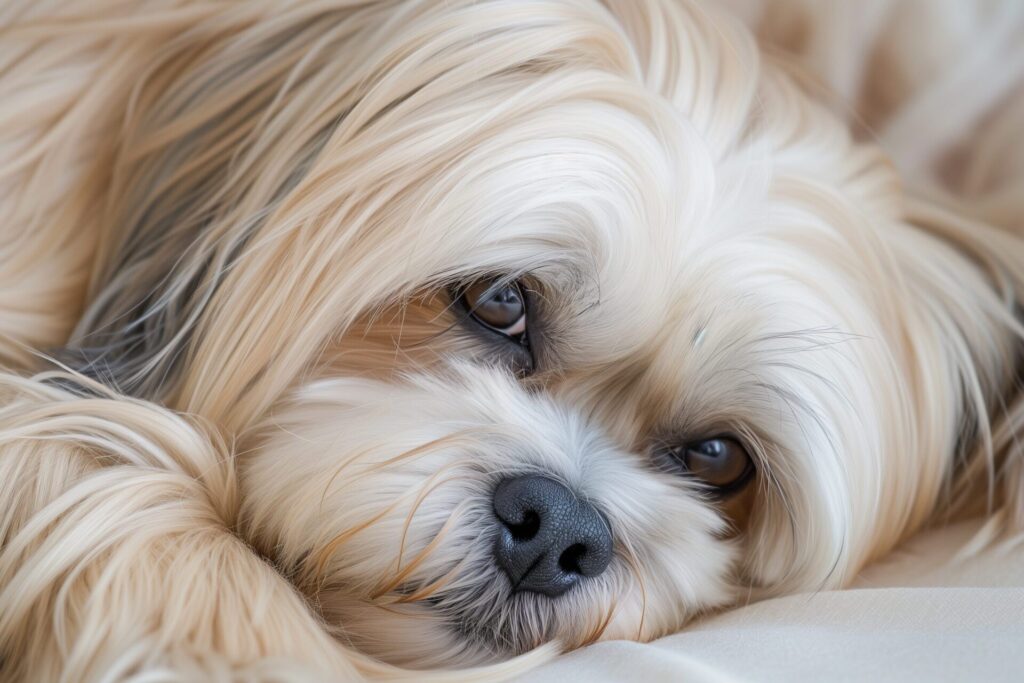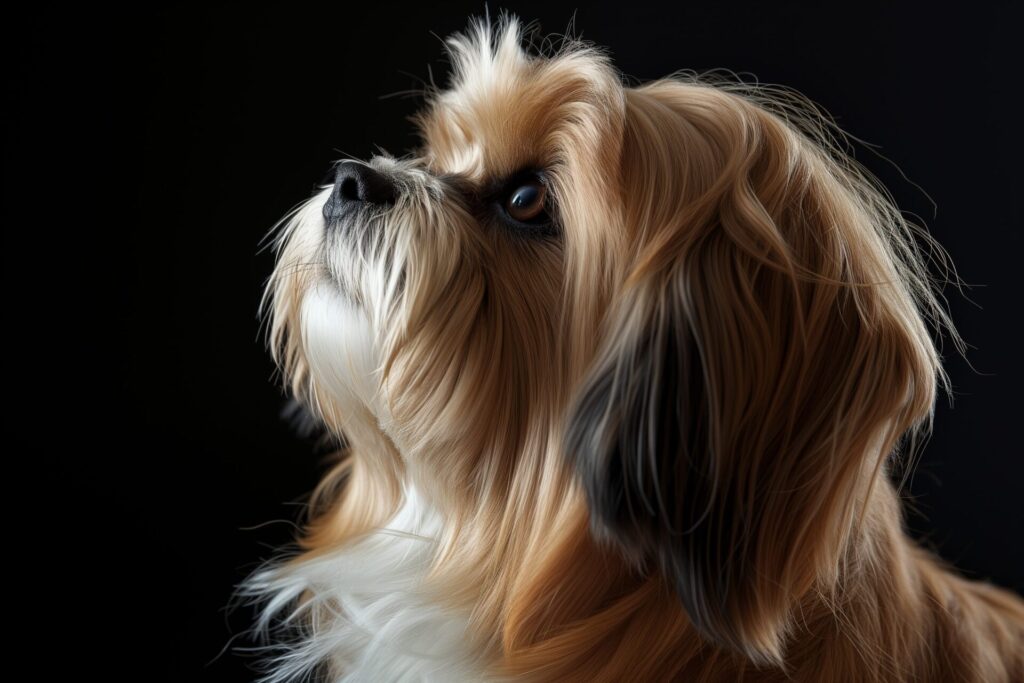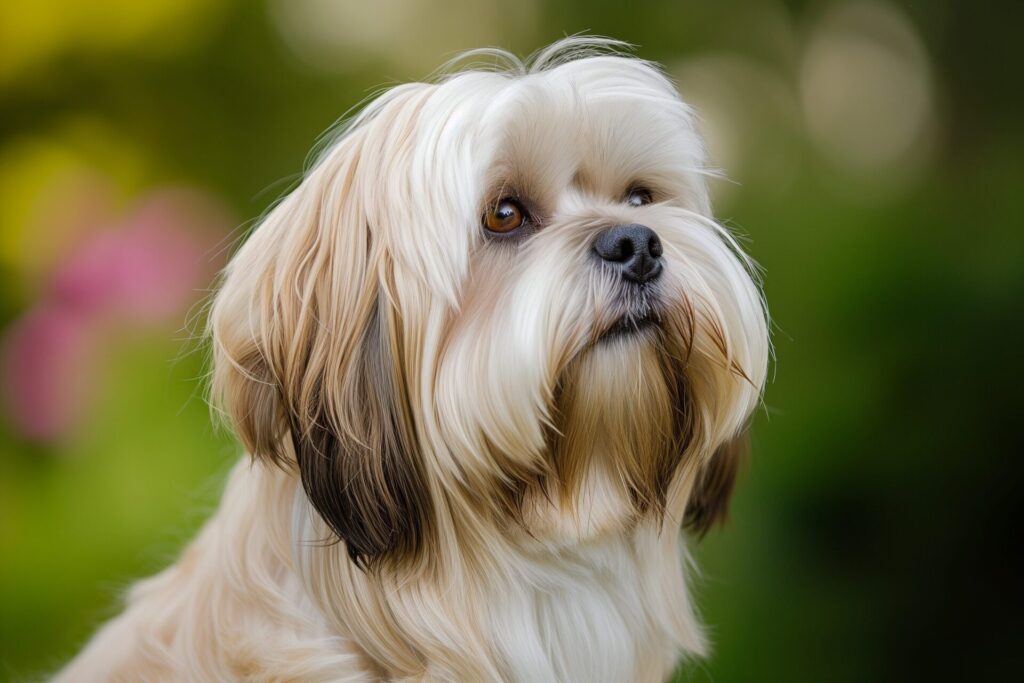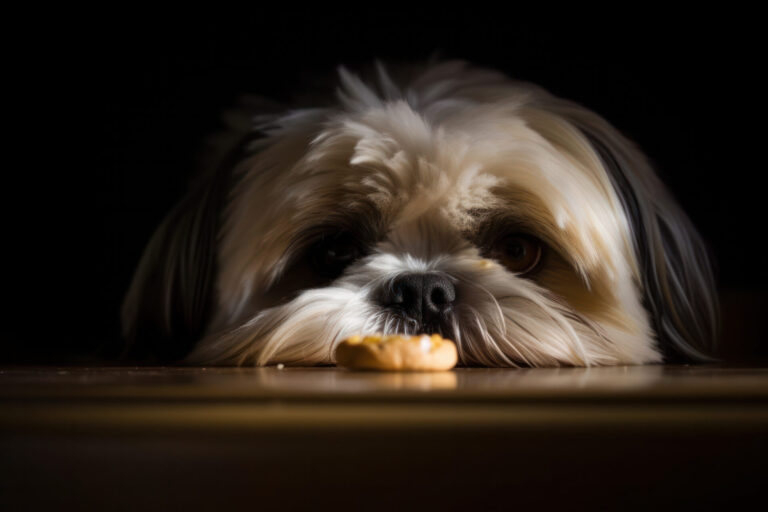
Grooming and coat care for Lhasa Apsos: A guide to maintaining a beautiful coat
Lhasa Apsos are known for their long, thick coats that require regular maintenance to keep them looking their best. In this article, we will discuss the basics of grooming and coat care for Lhasa Apsos, as well as some tips and tricks to help make the process as easy as possible.
Brushing the coat
First, it’s important to understand that Lhasa Apsos have a double coat that consists of a soft, downy undercoat and a longer, coarser outer coat. The outer coat of a Lhasa Apso requires regular brushing to prevent matting and tangling. A slicker brush and a metal comb are good choices for detangling and smoothing out the Lhasa Apso’s coat. Brushing your Lhasa Apso’s coat regularly is an important aspect of Lhasa Apso grooming and coat care.

You can brush your dog while they’re laying in your lap. Be gentle if you’ve brushed out tangles that caused uncomfortable pulls at their sensitive skin before. They will surely remember it the next time you take out the brush and probably run a mile!
Line Brushing: The gentle approach
Line brushing or layer brushing is done by pushing the hair back and starting to brush a thin layer from the underside rather than brushing the top coat. The bristles on a dog brush are not long enough to dig into the coat enough to get the tangles underneath. This doesn’t mean to brush harder, just start with underside layer brushing. You should do so daily to keep him tangle free.
If you make brushing an enjoyable experience your Lhasa Apso will learn to look forward to the time with you. Try not to make a “job” out of it for your dog but more time spent giving it attention. Speaking to them calmly and lovingly will get a better response from some dogs rather than being firm or stern in what you expect from them. Lhasa Apso dogs can be stubborn at times so going slow, and letting him get used to the experience is helpful but don’t be a pushover. They’ll see right through that.
Bathing your Lhasa Apso: Tips for a shiny coat

Regular bathing is an important aspect of Lhasa Apso grooming as it helps to keep the coat clean and shiny. Lhasa Apsos should be bathed every 4-6 weeks, or as needed, using a mild dog shampoo specifically formulated for long-haired breeds. It’s important to use a high-quality shampoo that is free from harsh chemicals and will not strip the natural oils from the coat. Before bathing, it’s a good idea to brush your Lhasa Apso’s coat, as discussed in the previous segment. This will remove any tangles or mats.
During the bath, be sure to lather the shampoo well and take extra care to cleanse the undercoat where dirt and oils can accumulate. Rinse the coat thoroughly to remove all soap residue, after which the coat should be dried completely. It’s important to note that Lhasa Apsos should never be bathed too frequently as it can dry out their skin and coat.
Trimming for health and style
Trimming the hair around the ears, feet, and tail is an essential aspect of Lhasa Apso grooming. This not only helps in maintaining their appearance but also plays a vital role in their hygiene and comfort.
- Ears: Regularly trim the hair around the ears to prevent matting and tangling. This also helps in reducing the risk of ear infections, as excessive hair can trap moisture and debris.
- Feet: Keep the hair around the feet well-trimmed. This is crucial for maintaining cleanliness, as long hair can collect mud and debris, and also for safety, to prevent slipping by allowing the pads to have better traction.
- Tail: Trim the hair on the tail to prevent matting and to keep it looking neat and tidy. A well-groomed tail is not only aesthetically pleasing but also more comfortable for your Lhasa Apso, preventing tangles that can cause discomfort.
Regular trimming is a key step in Lhasa Apso grooming. It not only enhances their charming appearance but also contributes to their overall wellbeing.
Nail clipping for comfort and care
It’s also important to keep your Lhasa Apso’s nails trimmed. Overgrown nails can cause pain and discomfort, and can also lead to problems with the dog’s gait. It’s best to use a professional dog nail clipper, as human nail clippers can be too harsh and can cause bleeding. If you’re unsure how to trim your dog’s nails, it’s best to seek the advice of a professional groomer or your vet. Properly trimmed nails are an important aspect of Lhasa Apso grooming.
Easy Lhasa Apso top knots: A touch of style

Creating top knots for Lhasa Apso dogs is not only a stylish addition but also functional, keeping hair out of their eyes. Once you’ve practiced a few times, you’ll find that creating top knots becomes a simple and enjoyable part of your grooming routine. Here are some tips and ideas to get you started:
- Choosing the right acccessories: You can use orthodontic bands for a snug, hair-safe hold, or opt for regular soft ponytail holders if you’re concerned about hair breakage. Lightweight kids’ barrettes are also a great option, as they add a bit of flair without weighing down the hair.
- Simple top knot technique: Start by gathering a section of hair on the top of your Lhasa Apso’s head, just above the eyes. Comb this section smooth and then gently twist it into a small bun or loop, securing it with your chosen hairband or barrette.
- Getting creative with braids: For an extra touch of elegance, try incorporating small braids into the top knot. Braid a few strands before twisting them into the knot, or create a braided band that runs along the head, integrating it into the top knot.
- Combining function and fashion: If your Lhasa Apso participates in shows, a neat and well-executed top knot can complement their overall appearance. For daily wear, a more relaxed and playful style might be appropriate.
- Protecting the hair: To prevent breakage and maintain the quality of the hair, regularly change the position of the top knot. Also, consider using a silk or satin hairband to reduce friction.
- Seasonal and special occasion styles: Don’t be afraid to experiment with different styles for holidays or special occasions. Adding small, dog-safe decorations like festive bows or seasonal-themed barrettes can make your Lhasa Apso the center of attention.
- Maintenance tips: Always be gentle when creating and removing top knots to avoid pulling or breaking the hair. Regularly brushing the area around the top knot will also help prevent matting.
Grooming is an essential part of Lhasa ownership…

Regular brushing, bathing, trimming and nail clipping are important for maintaining a healthy coat and preventing matting or tangling. With a little patience and the right tools, it’s easy to keep your Lhasa Apso’s coat looking beautiful.
Lhasa Apsos can be quite high maintenance amongst the dog breeds, so it would be wise to consult a professional groomer for expert advice.
Frequently Asked Questions
- How often should I brush my Lhasa Apso’s coat? Ideally, you should brush your Lhasa Apso’s coat every day to prevent matting and tangling, especially if they have a longer coat. Regular brushing also helps to distribute natural oils, keeping the coat healthy and shiny.
- Can I bathe my Lhasa Apso at home, and how often? Yes, you can bathe your Lhasa Apso at home. It is recommended to bathe them every 4-6 weeks using a mild dog shampoo formulated for long-haired breeds. Be sure to brush their coat before bathing to remove tangles.
- What are the best grooming tools for a Lhasa Apso? A slicker brush, a metal comb, and a pair of sharp scissors for trimming are essential. Additionally, use a high-quality dog shampoo for bathing and a professional dog nail clipper for nail trimming.
- Is it necessary to trim a Lhasa Apso’s coat? While a full coat trim is not always necessary, it’s important to regularly trim the hair around their ears, feet, and tail to prevent matting and keep them clean.
- How do I prevent my Lhasa Apso’s nails from becoming overgrown? Regular nail clipping is important. As a general rule, if you can hear your dog’s nails clicking on the floor, it’s time for a trim. If you’re unsure about the proper technique, consult a professional groomer or your vet.
- What is line brushing and why is it important for Lhasa Apsos? Line brushing is a technique where you brush the coat in layers, starting close to the skin. This ensures that both the top coat and the undercoat are properly groomed, preventing tangles and mats in the dense fur of a Lhasa Apso.
- Can frequent bathing harm my Lhasa Apso’s coat? Yes, bathing too frequently can strip the natural oils from their coat, leading to dryness and irritation. Stick to the recommended schedule of every 4-6 weeks, unless they get particularly dirty.
- Are there any specific styles or haircuts recommended for Lhasa Apsos? Lhasa Apsos can sport various hairstyles, from the traditional long coat to a shorter, more manageable “puppy cut.” The style often depends on the owner’s preference and the dog’s lifestyle. Regular grooming will keep any style looking neat and tidy.
- How can I make grooming a positive experience for my Lhasa Apso? Start grooming sessions when your Lhasa Apso is young to get them accustomed to the process. Use treats and positive reinforcement to create a pleasant association with grooming. Be gentle and patient, especially when untangling mats.
- What should I do if my Lhasa Apso’s coat gets matted? If you encounter mats, use a detangling spray and gently work through the mat with a metal comb. For severe matting, it may be necessary to seek the help of a professional groomer.
Important information
Information provided by LhasaLife should not be taken as professional veterinary advice or clinical advice. It is important to consult a licensed veterinarian for any health concerns or issues with your pet. The content of the article Grooming and coat care for Lhasa Apsos: A guide to maintaining a beautiful coat should not be used as a substitute for veterinary care, or treatment advice for you or your pet, and any reliance on this information is solely at your own risk.
This article may contain affiliate links, meaning we may earn a small commission at no extra cost to you if you purchase through these links. Affiliate links do not necessarily imply an endorsement of the product by LhasaLife. However, we only share products we believe could be helpful to you and your beloved Lhasa Apso. Your support helps us keep the website running and full of useful content.



Leave a Comment